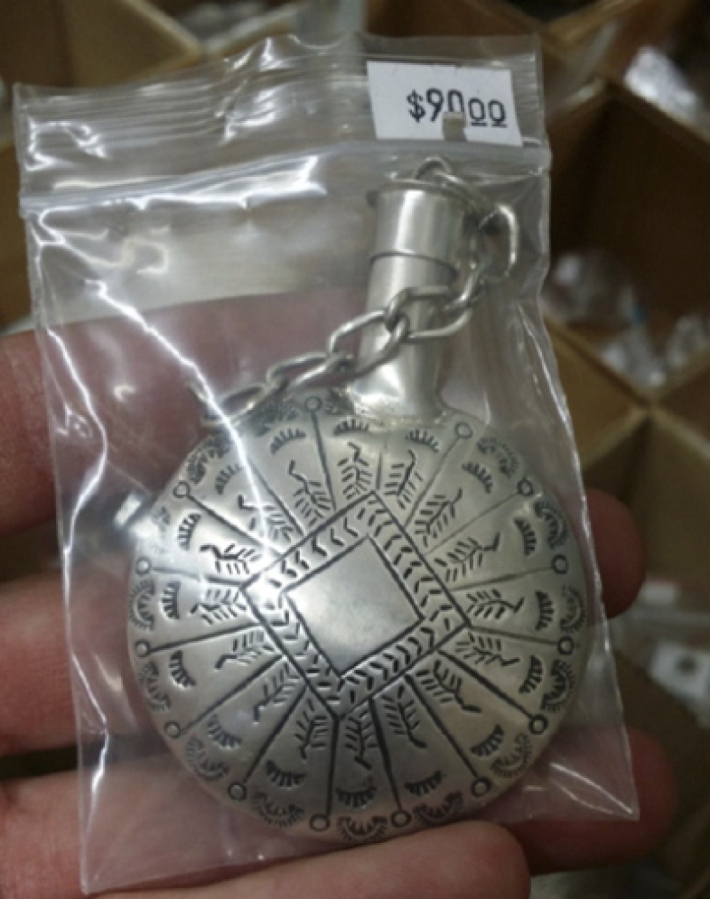SANTA FE, N.M. — The recent spread of fake Native American art and jewelry has shown the need to update how the federal government protects tribal artists from fraud that undercuts the value of their work, according to two U.S. senators who gathered suggestions for reforms on Friday.
New Mexico Sens. Tom Udall and Martin Heinrich convened a hearing in the American Indian arts hub of Santa Fe, where federal law enforcement officials and leading Native American artists described a disheartening influx of counterfeit jewelry, weavings and contemporary art knock-offs.
“We’ve got a serious problem on our hands,” said Udall, vice chair of the Senate Indian affairs committee, summarizing three hours of testimony. “Fake Indian arts and crafts are flooding the markets right here in Santa Fe and across the country and this is having an effect of destabilizing the Native Art market. It’s forcing Native Americans to quit their crafts.”
Udall said he hopes to propel efforts to modernize the Indian Arts and Crafts Act to cope with sophisticated international jewelry rings that copy Native American designs and police online sales. The act makes it a crime to falsely market and sell art as Native American-made when it is not.
A 2010 amendment to the Indian Arts and Crafts Act broadened provisions to allow any federal law enforcement to conduct investigations, while a 2012 agreement put the U.S. Fish and Wildlife Service at the forefront of pursuing violations.
William Woody, the top law enforcement official at the Fish and Wildlife Service, warned that counterfeits may easily write off economic sanctions, calling the current $250,000 maximum fine a “pittance.”
He and a representative from the Department of Justice said lawmakers should consider bolstering criminal forfeiture provisions as well.
Pressed for an estimate on how much of the U.S. Indian art market is made up of counterfeits, Woody said “it could be as high as 80 percent” but cautioned that confirmation is impossible.
Federal prosecutors in New Mexico are preparing for two trials in an ambitious investigation that traced falsified Native American art from manufacturers in the Philippines to galleries across the United States, from Santa Fe to Virginia and Alaska.
Officials on Friday said the targeted networks imported jewelry with a declared value of $11 million. They said the jewelry would have fetched at least twice that price through retail sales.
Meridith Stanton, executive director of the Interior Department’s Indian Arts and Crafts Board, said her office already works with legal departments for online sellers including Amazon, eBay and Etsy to confront vendors of fake Indian artwork.
Her office also attends events such as Santa Fe’s summer Indian Market to educate shoppers and brokers about avoiding fraudulent Indian art.



